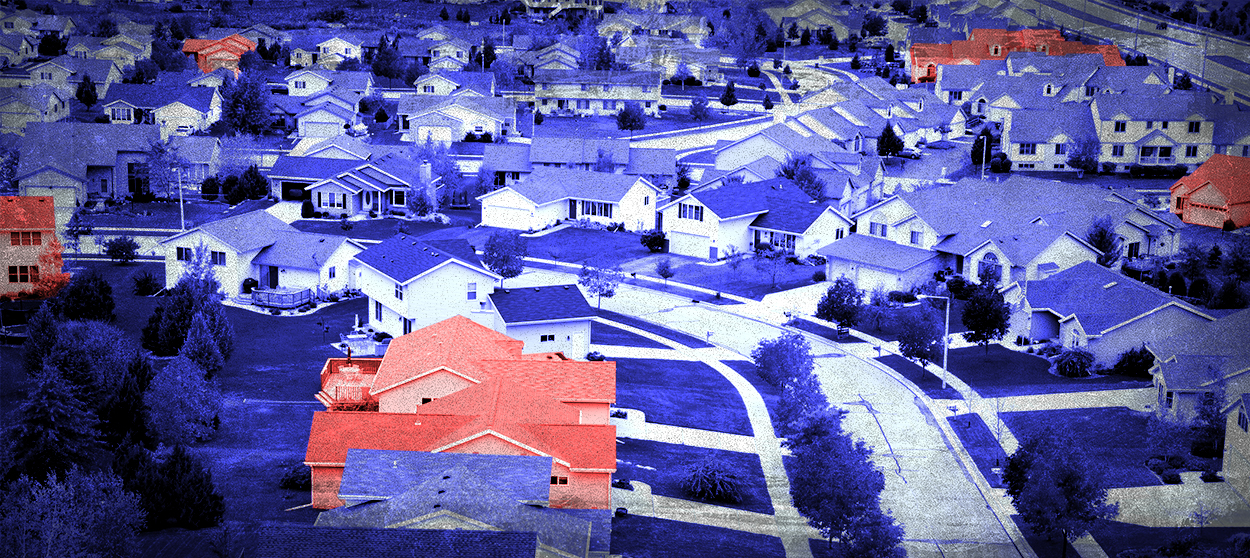Why winning the suburbs could come back to haunt the Democrats
Suburban moderates are probably not on board with the Democrats' best ideas


The 2018 midterms are upon us. And it's increasingly clear that if Democrats take the House, or even the Senate, they will have suburban voters to thank for it.
Of course, by "suburban voters," what we really mean are upper-class whites. Historically, these voters have been a bastion of GOP support. But as President Trump doubles down on fear-mongering and outright racist nationalism, more and more of these voters — and upper-class white women in particular — appear ready to flee the Republican Party. That in turn is opening up a wealth of opportunities for Democrats.
But in great opportunity lies great danger.
The Week
Escape your echo chamber. Get the facts behind the news, plus analysis from multiple perspectives.

Sign up for The Week's Free Newsletters
From our morning news briefing to a weekly Good News Newsletter, get the best of The Week delivered directly to your inbox.
From our morning news briefing to a weekly Good News Newsletter, get the best of The Week delivered directly to your inbox.
Turning upper-class whites into reliable Democratic voters will require the party to change as well. That reforging could win them the 2018 midterms, but it could also set them up for failure when it matters most.
This is not the first time the Democrats have tried wooing the suburbs. The strategy was arguably crucial to the party's massive congressional gains in the 2006 midterms. Of course, there are differences between 2006 and 2018: The redistricting of 2010 gerrymandered many more districts in Republicans' favor, and the Democrats need to pick up 24 House seats this time out, versus 17 then. But none other than Rahm Emmanuel, a key architect of the Democrats' 2006 victories, sees obvious connections: "If you look at the patterns of where gains are being made and who is creating the foundation for those gains, it's the same: An energized Democratic base is linking arms with disaffected suburban voters," he told The New York Times last year.
The gambit certainly worked as far as retaking Congress was concerned. But it also placed severe limits on what Democrats could do once in power.
Many of the party's pickups in '06 and '08 were directly or indirectly behind some of the biggest blunders of the Obama presidency. For instance, once the Great Recession hit, Democrats passed a stimulus package that was one-half to one-third as big as the economic circumstances required because they were concerned about blowback from the party's centrists, many of whom were elected in those '06 and '08 waves. Congressional Democrats were also instrumental in passing a bank bailout that eschewed nationalizing or restructuring the banks — which would've required massive write-downs of Americans' underwater mortgages — and instead gave a blank check to the executive branch. The Obama administration then used that freedom to shore up the banks and throw millions of homeowners under the bus. As for ObamaCare, appeasing Democratic centrists kept the law's spending much too low and scuttled the public option, among other failures. A policy that should've been a political triumph became a millstone around the Democrats' necks for years.
A free daily email with the biggest news stories of the day – and the best features from TheWeek.com
In other words, the suburban strategy that helped Democrats win in '06 and '08 basically tied their hands in responding to the financial crisis, the health care crisis, and more. That laid the groundwork for the Republican revolt of 2010 — which wiped out many of those same moderate Democrats, anyway — and led to a brutally slow recovery that created a petri dish for political extremism.
So will history repeat itself?
It certainly looks like it. Should Democrats retake Congress this year and then the presidency in 2020, passing things like Medicare-for-All, a national child care system, or a $15 national minimum wage will suddenly become a live possibility. Yet these bold economic policies are unlikely to garner the support of representatives who answer to well-to-do populations fearful of economic change and potentially higher taxes. Winning in the suburbs this year might set the stage for future policy disasters.
It's also worth questioning just how politically savvy a suburban strategy is in the first place. Sure, the plan worked in 2006 — but it didn't in 2016 when Democrats explicitly pursued it during Hillary Clinton's presidential run. "For every blue-collar Democrat we lose in western Pennsylvania, we will pick up two moderate Republicans in the suburbs in Philadelphia, and you can repeat that in Ohio and Illinois and Wisconsin," Senate Minority Leader Chuck Schumer (D-N.Y.) explained at the time. But while Clinton won the popular vote, it was by a meager 2 percent margin. She lost crucial Rust Belt states that Obama had won, thanks to working-class whites swinging for Trump.
If the Democrats can maintain some self-awareness, they could certainly woo suburban voters in 2018 and then go after blue collar voters in 2020. But the danger is that a successful suburban strategy might just convince them to try it again in 2020.
The party may need "suburban" voters in 2018. But come 2020, they may well drag it down to defeat.
Jeff Spross was the economics and business correspondent at TheWeek.com. He was previously a reporter at ThinkProgress.
-
 How will China’s $1 trillion trade surplus change the world economy?
How will China’s $1 trillion trade surplus change the world economy?Today’s Big Question Europe may impose its own tariffs
-
 ‘Autarky and nostalgia aren’t cure-alls’
‘Autarky and nostalgia aren’t cure-alls’Instant Opinion Opinion, comment and editorials of the day
-
 Japan’s Princess Aiko is a national star. Her fans want even more.
Japan’s Princess Aiko is a national star. Her fans want even more.IN THE SPOTLIGHT Fresh off her first solo state visit to Laos, Princess Aiko has become the face of a Japanese royal family facing 21st-century obsolescence
-
 Has Zohran Mamdani shown the Democrats how to win again?
Has Zohran Mamdani shown the Democrats how to win again?Today’s Big Question New York City mayoral election touted as victory for left-wing populists but moderate centrist wins elsewhere present more complex path for Democratic Party
-
 Millions turn out for anti-Trump ‘No Kings’ rallies
Millions turn out for anti-Trump ‘No Kings’ ralliesSpeed Read An estimated 7 million people participated, 2 million more than at the first ‘No Kings’ protest in June
-
 Ghislaine Maxwell: angling for a Trump pardon
Ghislaine Maxwell: angling for a Trump pardonTalking Point Convicted sex trafficker's testimony could shed new light on president's links to Jeffrey Epstein
-
 The last words and final moments of 40 presidents
The last words and final moments of 40 presidentsThe Explainer Some are eloquent quotes worthy of the holders of the highest office in the nation, and others... aren't
-
 The JFK files: the truth at last?
The JFK files: the truth at last?In The Spotlight More than 64,000 previously classified documents relating the 1963 assassination of John F. Kennedy have been released by the Trump administration
-
 'Seriously, not literally': how should the world take Donald Trump?
'Seriously, not literally': how should the world take Donald Trump?Today's big question White House rhetoric and reality look likely to become increasingly blurred
-
 Will Trump's 'madman' strategy pay off?
Will Trump's 'madman' strategy pay off?Today's Big Question Incoming US president likes to seem unpredictable but, this time round, world leaders could be wise to his playbook
-
 Democrats vs. Republicans: who are US billionaires backing?
Democrats vs. Republicans: who are US billionaires backing?The Explainer Younger tech titans join 'boys' club throwing money and support' behind President Trump, while older plutocrats quietly rebuke new administration
